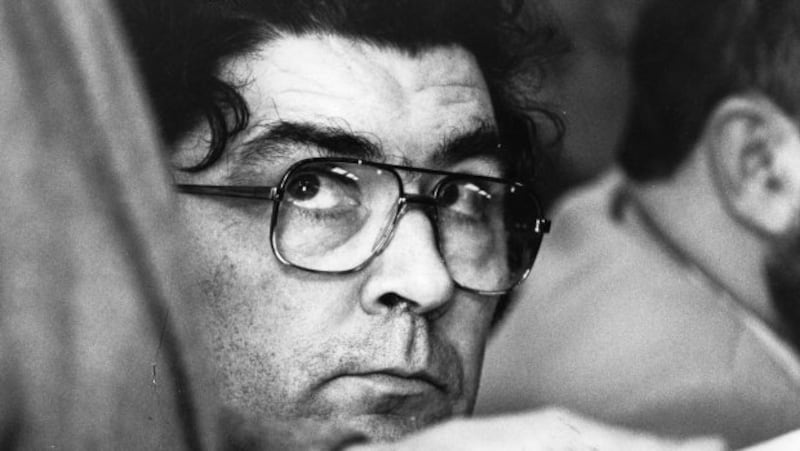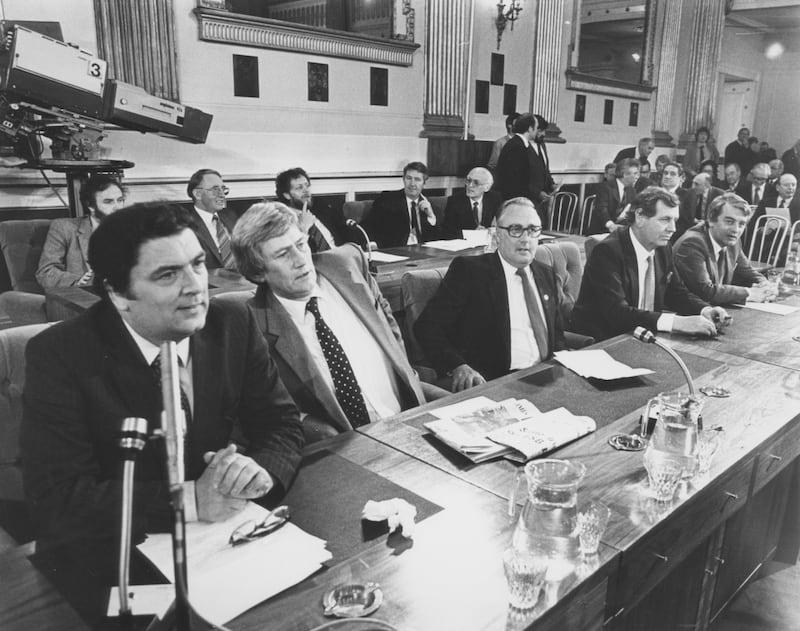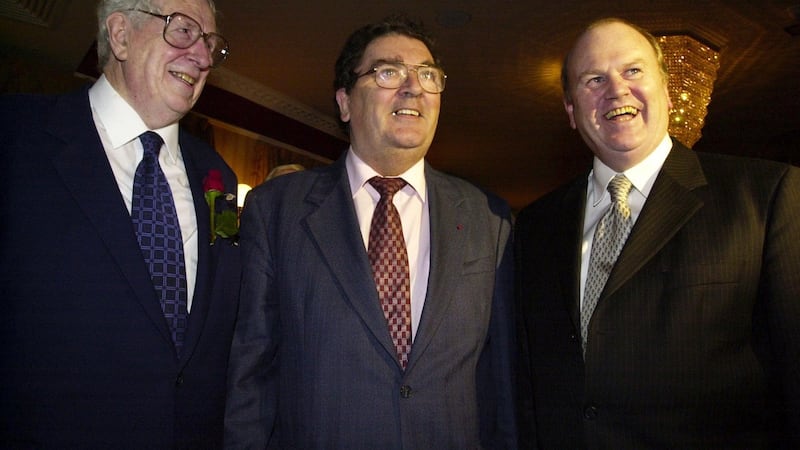John Hume was a towering political figure who helped to redefine Irish nationalism. In the process, he changed Irish politics, North and South, as well as transforming the relationship between the islands of Ireland and Britain.
The current powersharing structure within Northern Ireland, and the institutional structures that define the relationship between the North and the Republic, as well as those between Ireland and the United Kingdom owe more to Hume than anybody else.
Since the early 1970s, he stuck doggedly to a vision that emphasised the need for the two communities in the North to find a way of living together as well as finding a way to redefine the relationship of Northern Ireland to the Republic and to the rest of the UK.

At the heart of that vision was a belief in the principle of consent and the unwavering notion that unity among people rather than territory should be the goal of political activity by nationalists.
In the course of his long career, Hume infuriated friends as well as foes by his stubbornness, which could sometimes veer into self-indulgence, but about his achievement there is no argument.
He was the inspiration behind the Sunningdale Agreement of 1973, the Anglo-Irish Agreement of 1985 and the Belfast Agreement of 1998. All of them hinged on replacing majority rule in the North with a powersharing Executive that would represent the two communities.
In tandem with this, he argued for North-South institutions which would allow Northern nationalists a means of expressing their Irish identity.
His decision to engage in talks with Sinn Féin leader Gerry Adams at a time when the Provisional IRA’s murderous campaign was still in full swing provoked considerable controversy and dismayed many of his ardent supporters but it was a crucial step in the delicate process that led to the IRA ceasefire.
A key to Hume’s influence is that he managed to change perceptions of the Northern Ireland situation in the outside world, not only in Britain and the United States but across the European Union.
The backing of influential political leaders in these countries helped give the necessary impetus to the search for a solution to the knotty problem posed by the ongoing problems of Northern Ireland and the persistent violence that ensued.

John Hume became the key strategist and spokesman for constitutional nationalism in the North from the moment the civil rights protest in Derry in October 1968 was met with police violence.
Before the civil rights protesters took to the streets, the sectarian discrimination inflicted on Northern nationalists had been largely ignored by successive governments in Dublin, who instead made the occasional noise objecting to partition.
The British government, which had ultimate responsibility for the problem, refused to get involved, leaving it to the unionist administration in Stormont to run the region as it deemed fit.
After the Derry protest of 1968, everything changed and Hume was catapulted into the position of speaking for Northern nationalism even though he initially held no public office.
Persuasive persona
He quickly developed an easy mastery of television, projecting an articulate, personable and highly persuasive persona. He also developed a clear analysis of the Northern Ireland problem and a framework of democratic principles upon which a solution had to be based.
His philosophy rested upon principles of tolerance, social justice, respect for and accommodation of difference, the complete rejection of violence, and the imperative of working for political progress by means of dialogue aimed at achieving consensus. He drew heavily on the inspiration of Mahatma Gandhi, and Dr Martin Luther King jnr, whom he quoted repeatedly.

Hume was one of the founders of the Social Democratic and Labour Party (SDLP) and soon became its dominant figure. With Northern Ireland constantly in the news at home and abroad, he was the person most frequently consulted by the international media about the ongoing crisis.
He also became the person the Irish government came to rely on more and more in the early 1970s as IRA violence and loyalist terrorism pushed Northern Ireland into an apparently endless spiral of violence.
His mastery of media communication also won over the Irish-American political elite and the overwhelming majority of European political leaders as well as a significant section of British public opinion.
Following the collapse of all the bright hopes placed in the Sunningdale Agreement of 1973, Hume did not despair, even when British governments appeared to have given up on the notion of powersharing.
He developed a strong bond with Fine Gael’s Garret FitzGerald as both men grappled with the problem in the early 1980s, and had a huge influence on the New Ireland Forum report and the Anglo-Irish Agreement which ultimately flowed from that process.
That agreement gave the Irish government a role in the internal affairs of Northern Ireland as a voice for nationalists. Hume strongly backed it despite the objections of Fianna Fáil leader Charles Haughey and he never really forgave Haughey’s attempts to undermine it by sending Brian Lenihan senior to the United States to lobby against it.
In the years that followed, Hume began his talks with Adams and persisted, despite a number of setbacks, in what came to be known as the Hume-Adams process. That paved the way for the IRA ceasefire and ultimately the Belfast Agreement which eventually brought Sinn Féin into the political process.
From the current vantage point, it is hard to see how the Belfast Agreement could have been achieved, were it not for the fact that Hume had lined up such an enormously powerful international alliance in favour of a settlement based upon the principles of consent that he enunciated. His political persona derived from his absolute inner certainty that he had correctly analysed the problem, and had formulated the right answer to solve it. He managed ultimately to bring around republicans who had resisted his analysis for decades.
His deputy leader Séamus Mallon, with whom he had at times a testy relationship, remarked that the Belfast Agreement represented “Sunningdale for slow learners”, but it was Hume’s patience and persistence that eventually brought republicans around to accepting his analysis.

He had the self-belief to repeat the same message for decades until eventually his analysis was accepted by almost everybody. Friends and foes referred to that message as the “single transferable speech” or “Hume speak” but he always insisted that since the problem hadn’t changed, neither had the answer.
Ultimately, that vision became the basis of the political solution personified by the Belfast Agreement. That is his testament.








